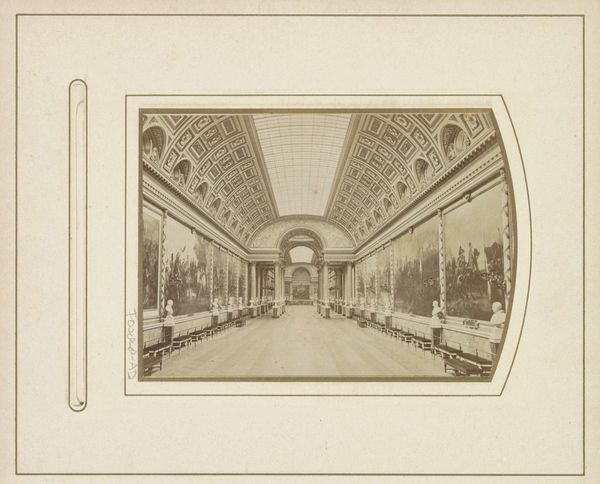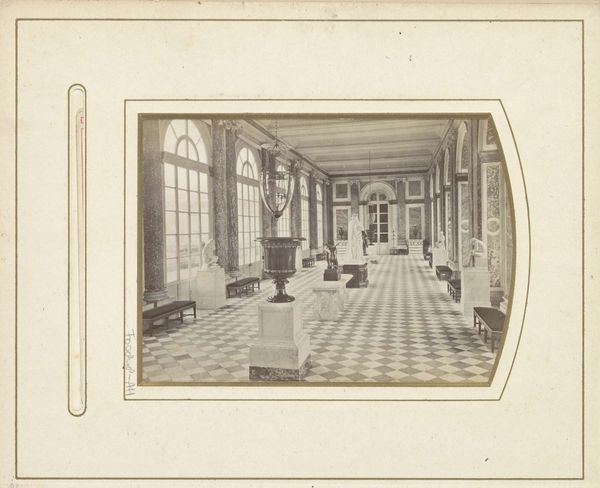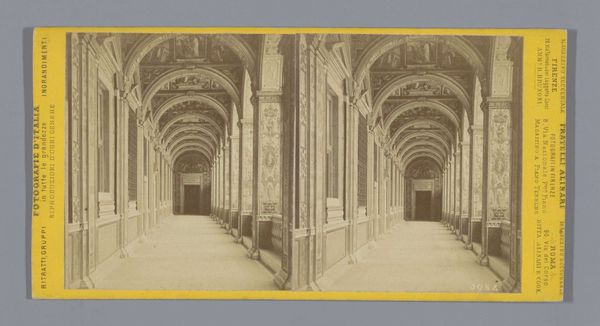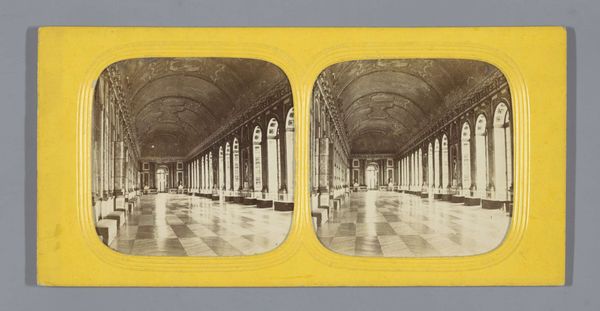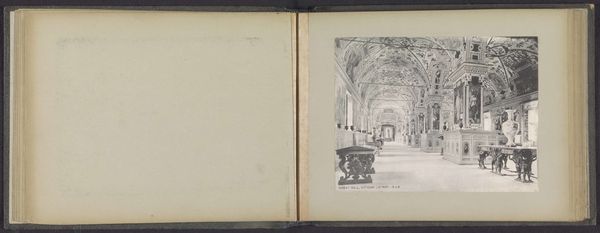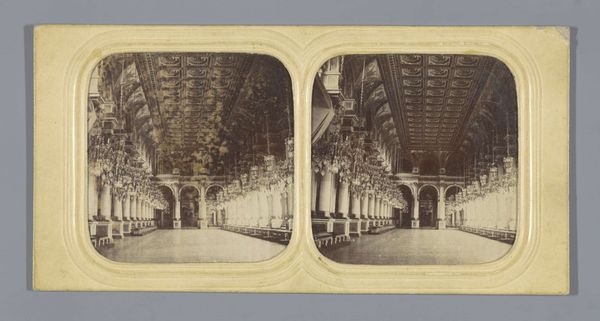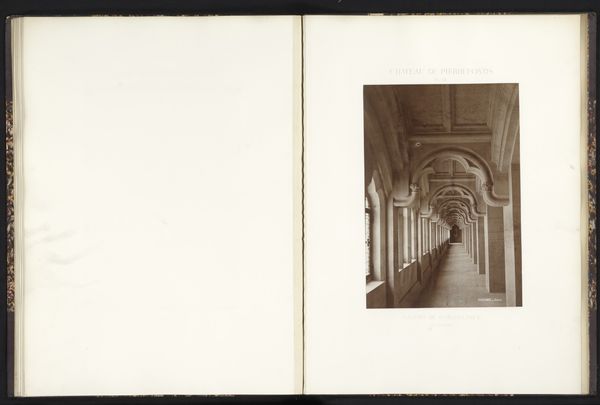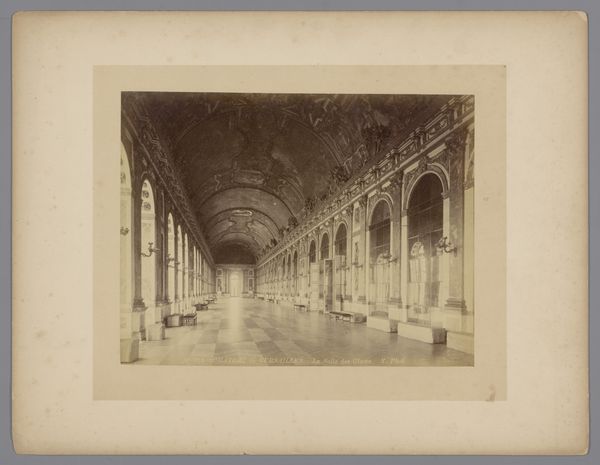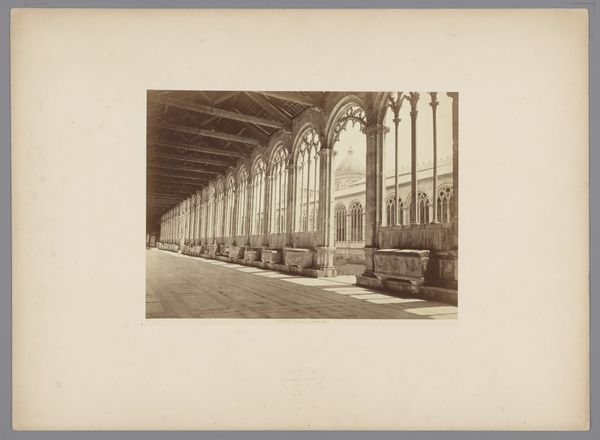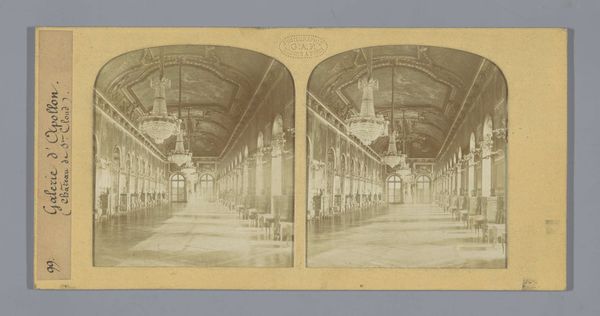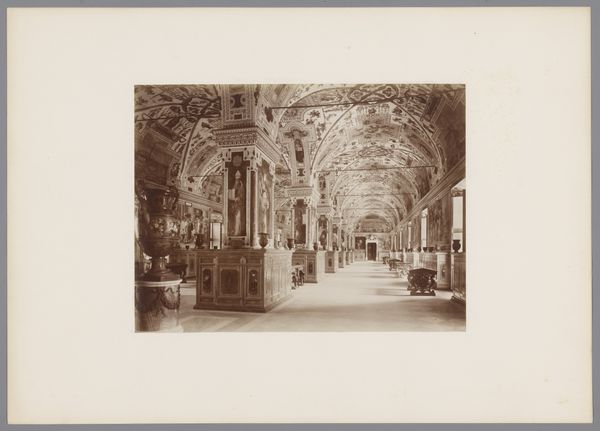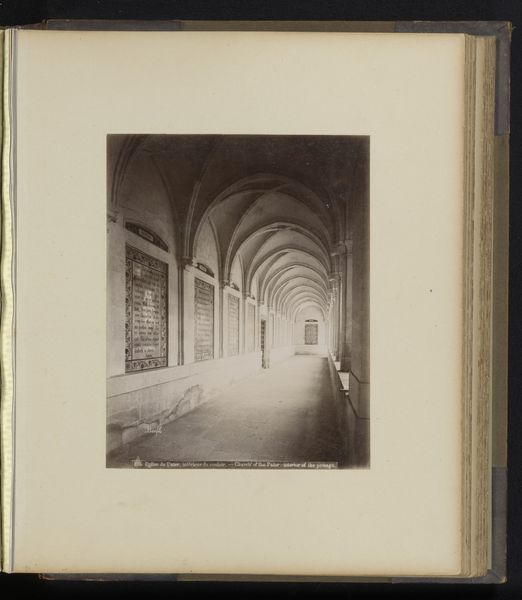
print, photography, gelatin-silver-print
#
16_19th-century
# print
#
impressionism
#
landscape
#
photography
#
gelatin-silver-print
#
19th century
Dimensions: height 108 mm, width 163 mm
Copyright: Rijks Museum: Open Domain
Editor: This photograph, titled "Interieur van de Spiegelzaal in het Paleis van Versailles," is a gelatin-silver print taken sometime between 1870 and 1900. It's quite striking in its use of perspective, drawing the eye deep into the Hall of Mirrors. What structural elements define its composition for you? Curator: The linear perspective is paramount, guiding our gaze towards the vanishing point, but notice how the repetition of the arches and the rhythmic placement of the benches reinforce the sensation of depth and the monumental scale. The photograph’s success hinges on these formal repetitions. How does the light function within this structured space? Editor: It seems almost diffused, contributing to a muted tonal range, emphasizing the texture of the surfaces rather than sharp contrasts. It almost flattens the scene. Curator: Precisely. The even distribution of light de-emphasizes any single focal point, encouraging a reading of the entire pictorial field. The light almost becomes a palpable entity that unifies the scene. Do you think the absence of figures impacts your viewing of the image? Editor: Absolutely. It amplifies the hall’s architectural immensity and somewhat eerie stillness, focusing on the details rather than potential inhabitants. It feels almost timeless. Curator: The emptiness transforms the space into a study of pure form. The photograph becomes less about capturing a moment and more about investigating the formal qualities of architecture and space. Consider the composition alone and imagine the artist working in the camera obscura tradition. The choice of monochrome further abstracts the subject, allowing viewers to appreciate the subtle gradations in tone and texture without the distraction of color. It creates an iconic space that transcends a mere record. Editor: I see the power of its structure now; how the perspective, light, and even the absence of figures contribute to the overall reading of the work itself. Thank you for highlighting the formal and theoretical considerations of architectural photography. Curator: My pleasure; exploring these elements allows us to fully appreciate the artistic merit within the documentary function.
Comments
No comments
Be the first to comment and join the conversation on the ultimate creative platform.
